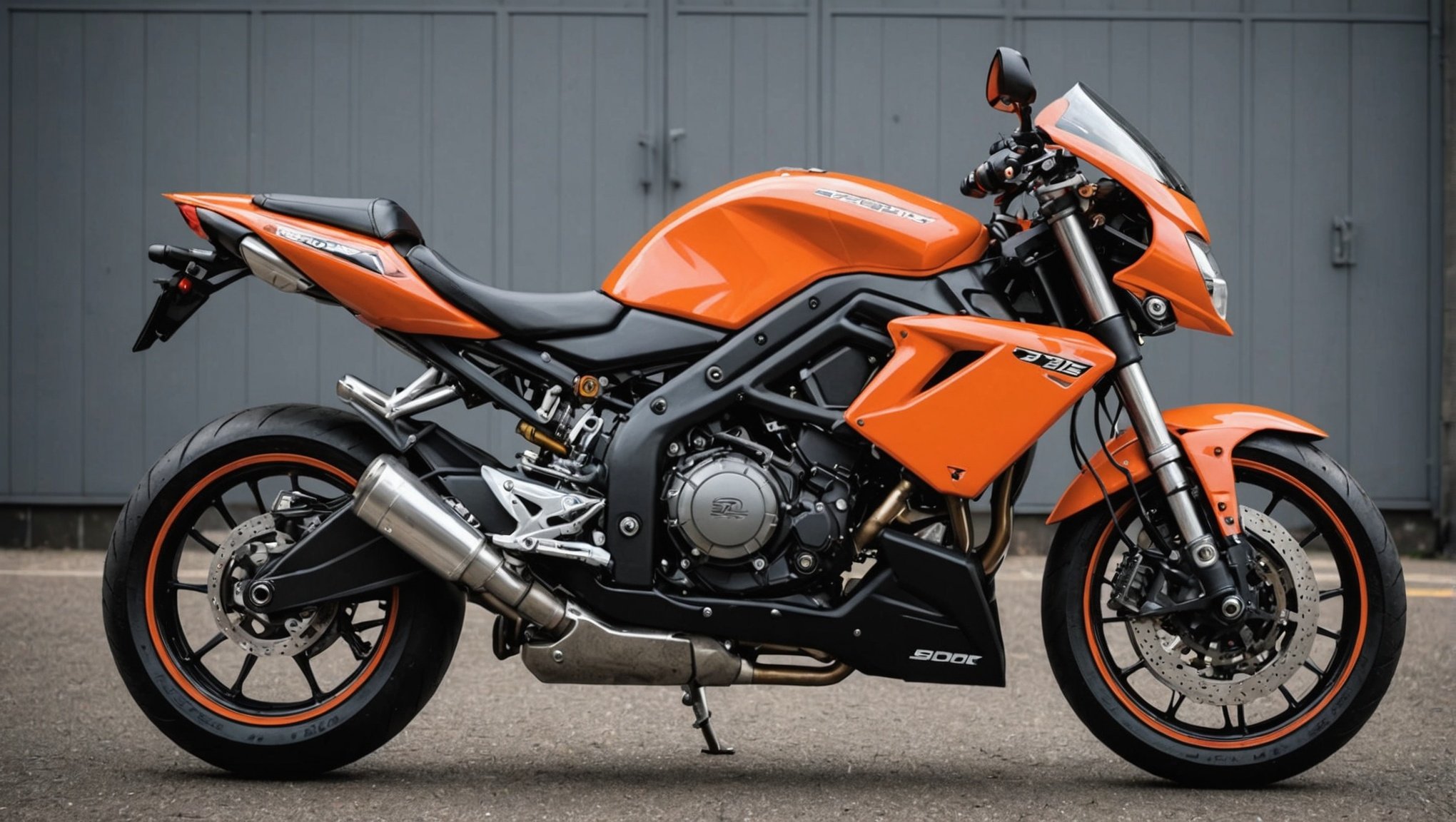Top Mechanical Issues in UK Sport Bikes: Prevention Tips to Keep You Riding Smoothly
When it comes to owning and riding a sport bike in the UK, there are several mechanical issues that can arise, potentially disrupting your riding experience and even posing safety risks. However, with the right knowledge and regular maintenance, many of these issues can be prevented or mitigated. Here’s a comprehensive guide to help you identify, prevent, and address some of the most common mechanical failures in UK sport bikes.
Running Out of Steam: Engine Failures
The engine is the heart of your motorcycle, providing the power and performance that make riding so exhilarating. However, engine failures can be a significant concern, especially for sport bikes that are often pushed to their limits.
Also to discover : Top Shock Absorbers for Sport Bikes Navigating the UK”s Pothole-Riddled Urban Roads
Engine Overheating
Engine overheating is a common issue, particularly in high-performance riding. This can be caused by a lack of coolant, a faulty radiator, or simply the strenuous conditions of high-speed riding. To prevent overheating, it’s crucial to perform regular check-ups on your cooling system.
- Check Coolant Levels: Ensure that your coolant levels are always at the recommended level. Low coolant levels can quickly lead to overheating.
- Inspect the Radiator: Regularly inspect your radiator for any signs of damage or leaks. A faulty radiator can fail to dissipate heat effectively.
- Monitor Temperature Gauges: Keep an eye on your temperature gauges during rides. If the temperature starts to rise, pull over and let the engine cool down.
Complete Engine Failures
Complete engine failures, although less common, can be catastrophic. These failures often result from neglecting smaller issues such as oil leaks or worn-out parts.
In parallel : Top Ear Protection Solutions for UK Sport Bikers: Safeguard Your Hearing on the Road!
- Regular Servicing: Ensure your motorcycle undergoes regular servicing. This includes oil changes, filter replacements, and inspections of critical components.
- Prompt Repairs: Address any issues promptly. Ignoring small problems can lead to more severe and costly repairs down the line.
- Use High-Quality Parts: When replacing parts, opt for high-quality materials to ensure durability and performance.
“As the engine is the heart of your bike, it’s essential to keep it well-maintained. Regular servicing and prompt repairs can save you from the hassle and expense of a complete engine failure,” advises a seasoned mechanic.
On The Edge: Tyre and Rim Issues
Tyres and rims are critical components of your motorcycle, providing the direct contact with the road and ensuring smooth navigation.
Tyre Problems
Tyre issues, such as punctures or bald tyres, can significantly affect your bike’s handling and safety.
- Regular Inspections: Monitor the condition of your tyres regularly. Check for any visible damage, signs of wear, or improper inflation.
- Proper Inflation: Ensure your tyres are always properly inflated. Under-inflated tyres can lead to a sluggish ride and increased risk of punctures, while over-inflated tyres can result in a harsh ride and higher risk of blowouts.
- Replace When Necessary: Replace your tyres when they show signs of wear or damage. Using puncture-resistant tyres can also help mitigate the risk of punctures.
Rim Issues
Rims can be damaged due to impacts or riding on rough terrains, affecting the balance and handling of your bike.
- Regular Inspections: Inspect your rims regularly for any dents or cracks.
- Seek Professional Help: If you notice any damage, seek professional help immediately. A damaged rim can compromise the safety of your ride.
“Tyres and rims are exposed to the most wear and tear. Regular monitoring and maintenance can help prevent issues that could lead to accidents,” emphasizes a motorcycle safety expert.
Hitting The Brakes: Brake System Failures
Brake system failures are among the most critical issues that can arise, as they directly impact your ability to stop safely.
Common Brake Problems
Common brake problems include worn-out brake pads, air in the brake lines, and brake fluid leaks.
- Regular Inspections: Regularly inspect your brake pads for wear. Replace them promptly when necessary.
- Check Brake Fluid: Ensure your brake fluid levels are at the recommended level. Change the brake fluid as recommended by the manufacturer.
- Bleed Brake Lines: If you notice any air in the brake lines, bleed them immediately to maintain optimal braking performance.
Maintenance Tips
To keep your brakes in top shape, follow these maintenance tips:
- Use High-Quality Brake Pads: Opt for high-quality brake pads that provide better braking performance and durability.
- Avoid Riding Aggressively: Aggressive riding can wear out your brake pads faster. Practice smooth and controlled braking.
- Check for Leaks: Regularly check for any signs of brake fluid leaks. Addressing these issues promptly can prevent more severe problems.
“Brakes are the most critical safety feature of your motorcycle. Regular inspections and maintenance are essential to ensure your brakes function optimally,” advises a motorcycle mechanic.
Shifting Gears: Bottom Bracket and Drivetrain Issues
The bottom bracket and drivetrain are crucial components that transfer power from your legs to the bike, enabling smooth pedaling and gear shifting.
Bottom Bracket Issues
Bottom bracket problems often manifest as creaking or clicking sounds while pedaling.
- Regular Servicing: Regularly service your bottom bracket to ensure it remains in good condition.
- Lubrication: Keep the bottom bracket well-lubricated to prevent friction and wear.
- Replace When Necessary: Replace the bottom bracket when it shows signs of wear or damage.
Drivetrain Issues
Drivetrain issues include worn-out gears, noisy chains, and difficulty shifting gears.
- Regular Cleaning and Lubrication: Regularly clean and lubricate your drivetrain to keep it running smoothly.
- Replace Worn-Out Parts: Promptly replace worn-out parts such as gears and chains to prevent more severe issues.
- Adjust Gear Settings: Ensure your gear settings are properly adjusted to avoid any shifting difficulties.
“Ignoring drivetrain issues can lead to more severe problems like a broken chain or a damaged derailleur. Regular maintenance is key to keeping your drivetrain in top shape,” notes a cycling enthusiast.
Under Pressure: Inner Tube and Tyre Issues
Inner tubes and tyre pressure are often overlooked but are critical for a smooth and safe ride.
Inner Tube Issues
A punctured inner tube can leave you with a flat tyre, which can be inconvenient and dangerous.
- Use Puncture-Resistant Tyres: Using puncture-resistant tyres can help mitigate the risk of punctures.
- Carry a Puncture Repair Kit: Always carry a puncture repair kit to help you fix a flat tyre quickly.
- Regular Inspections: Regularly inspect your inner tubes for any signs of damage or wear.
Tyre Pressure Issues
Incorrect tyre pressure can affect your ride’s performance and safety.
- Check Tyre Pressure Regularly: Ensure your tyres are always at the recommended pressure.
- Adjust Pressure According to Conditions: Adjust your tyre pressure according to the riding conditions. For example, lower pressure may be needed for off-road riding.
- Avoid Over-Inflation: Avoid over-inflating your tyres, as this can lead to a harsh ride and increased risk of blowouts.
“Proper tyre pressure is crucial for both performance and safety. Regular checks can help you avoid issues like punctures and blowouts,” advises a motorcycle owner.
Securing Your Bike: Additional Tips
Beyond mechanical maintenance, securing your motorcycle is also vital to protect it from theft.
Ground Anchors
Using a ground anchor can provide a secure immovable object to lock your motorcycle to.
- Choose the Right Location: Select a location that is difficult for thieves to access. Concrete or tall brick walls are ideal surfaces.
- Use High-Security Chains: Use high-security chains that are resistant to bolt cutters and other tools. Chains with 16 mm thick links are highly recommended.
Locking Your Bike
When locking your bike, ensure you use the right locking mechanism.
- Chain Locks: Chain locks are generally more secure than U-locks. They are less susceptible to leverage attacks and power tools.
- Secure the Frame: Always secure the frame of your bike rather than just the wheels. This makes it more difficult for thieves to remove the wheels and steal the bike.
“Securing your motorcycle is as important as maintaining it. A good ground anchor and high-security chain can deter most thieves,” suggests a motorcycle security expert.: Preventive Measures and Regular Check-ups
Preventing mechanical failures in your sport bike is largely about regular maintenance and prompt repairs. Here are some key takeaways to keep your bike running smoothly:
Regular Maintenance Tasks
- Check Tyres: Regularly check your tyres for wear, damage, and proper inflation.
- Inspect Brakes: Inspect your brake pads, brake fluid levels, and brake lines regularly.
- Service Engine: Ensure your engine undergoes regular servicing, including oil changes and filter replacements.
- Check Drivetrain: Regularly clean and lubricate your drivetrain, and replace worn-out parts promptly.
Practical Insights
- Use High-Quality Parts: When replacing parts, opt for high-quality materials to ensure durability and performance.
- Consult Owner Manual: Always consult your owner manual for specific maintenance recommendations tailored to your motorcycle model.
- Seek Professional Help: If you’re unsure about any maintenance or repair tasks, seek help from a professional mechanic.
By following these tips and staying vigilant about your motorcycle’s condition, you can ensure a smooth, safe, and enjoyable riding experience.
Detailed Checklist for Regular Maintenance
Here is a detailed checklist to help you stay on top of your motorcycle maintenance:
Weekly Checks
- Tyre Pressure: Check tyre pressure and adjust as necessary.
- Brake Fluid: Check brake fluid levels.
- Chain Lubrication: Lubricate the chain if applicable.
- Air Filter: Check the air filter for cleanliness.
Monthly Checks
- Oil Levels: Check engine oil levels and top off if necessary.
- Brake Pads: Inspect brake pads for wear.
- Inner Tubes: Inspect inner tubes for any signs of damage or wear.
Quarterly Checks
- Engine Oil Change: Change the engine oil according to the manufacturer’s recommendations.
- Filter Replacements: Replace air and oil filters.
- Drivetrain Cleaning: Clean and lubricate the drivetrain.
Annual Checks
- Full Service: Perform a full service of your motorcycle, including inspections of all critical components.
- Brake System Bleed: Bleed the brake system to remove any air in the lines.
By incorporating these checks into your routine, you can significantly reduce the risk of mechanical failures and ensure your motorcycle remains in top condition.
In conclusion, maintaining your sport bike is a multifaceted task that requires regular attention to various components. From engine and brake maintenance to tyre and drivetrain care, each aspect plays a crucial role in ensuring a smooth and safe riding experience. By following the tips and guidelines outlined here, you can protect your motorcycle, enhance its performance, and enjoy countless miles of riding pleasure.













